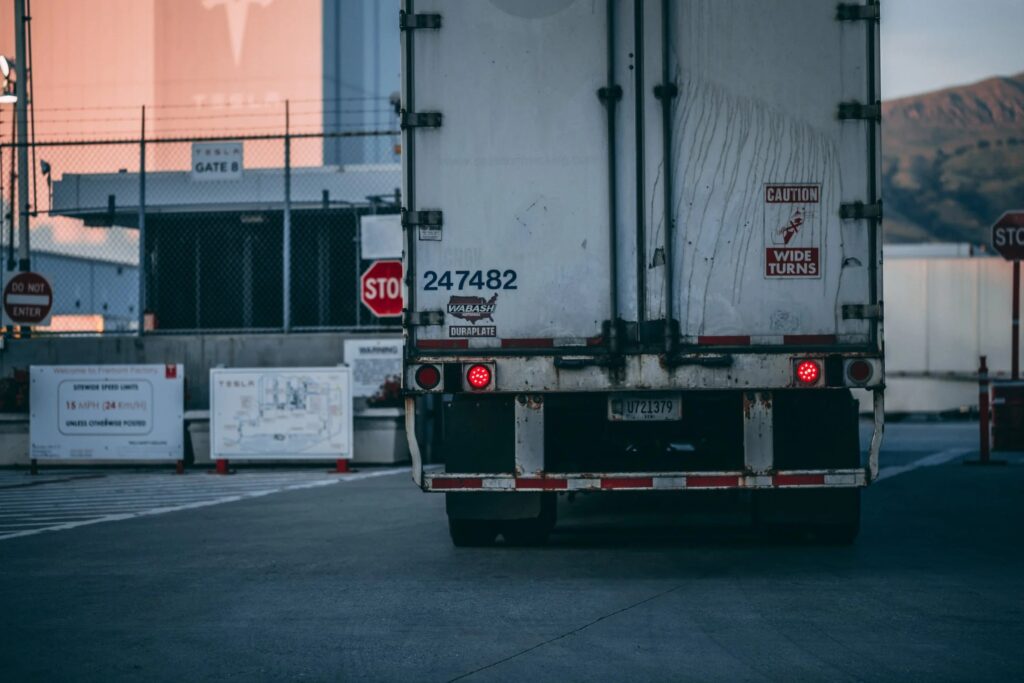In the fiscal landscape of 2023, the international logistics market notched an impressive tally, soaring to a valuation of $9407.5 billion. This figure not only underscores the indispensable nature of adept goods transit in our intricately woven global tapestry but also casts a spotlight on the wide-reaching and critical nature of logistics in driving economic growth and connecting markets across borders.
Within the swift currents of technological evolution, the domain of logistics emerges as a harbinger of ingenuity, persistently navigating through avenues to bolster the efficacy, consistency, and ecological harmony of freight movement.
Innovation in the Trucking Industry
Within the intricate landscape of global commerce, the trucking sector stands as essential, weaving through the narrative of logistical prowess. The quest for trucking innovation is not merely beneficial but transformative, reshaping the journey of products from creation to consumption.
The adoption of aerodynamic technologies and innovative tools such as satellite-guided navigation, advanced communication systems, and the integration of autonomous vehicles into fleets marks a significant leap in operational refinement.
These advancements enable freight carriers to sharpen their logistical precision, trim expenses, and accelerate the pace at which goods reach their destinations. More than just streamlining transport, this evolutionary stride in trucking mirrors a commitment to environmental stewardship, paving the way for a reduction in the sector’s carbon footprint.
Automation and Route Optimization
The integration of automation technology has significantly transformed the landscape of goods delivery, especially concerning the optimization of delivery routes. Through the utilization of advanced algorithms and machine learning techniques, logistics enterprises can now automate the intricate process of route planning. This involves meticulous consideration of various factors, including but not limited to traffic conditions, upcoming weather patterns, and the prioritization of deliveries.
This automated methodology not only results in the reduction of delivery durations but also facilitates decreased fuel consumption and operational expenditures. By dynamically optimizing delivery routes in real time, businesses can guarantee swifter and more dependable deliveries, consequently elevating levels of customer satisfaction and fostering long-term loyalty.
Tracking and Monitoring Systems
In the intricate world of global commerce, the imperatives for unequivocal clarity and stringent oversight in the conveyance of goods have ascended to paramount importance. The advent of surveillance and oversight paradigms has ushered in a pivotal shift in logistics management, bestowing upon enterprises granular visibility into the locales and welfare of their freight.
Harnessing the precision of GPS innovations, organizations now wield the capability to navigate the labyrinth of transportation logistics with an unprecedented level of acuity, thereby mitigating the risks of transit delays and impediments.
At the same time, the integration of avant-garde surveillance technologies, replete with sensory apparatus and the expansive network of the Internet of Things (IoT), facilitates vigilant monitoring over the ambient parameters — encompassing, yet not limited to, thermal and moisture conditions — that bear upon the preservation of merchandise quality during its journey.
Data Analytics for Demand Forecasting
The role of data analytics in forecasting and enhancing demand management within the goods delivery sector has become increasingly prominent. Through the examination of past sales figures, emerging market tendencies, and consumer behaviors, enterprises are able to predict future demand with considerable precision. This foresight enables the fine-tuning of stock levels and the planning of distribution efforts.
Utilizing predictive analytics, companies gain the ability to foresee changes in demand, strategize in advance, and distribute resources with greater precision. Decisions grounded in data help in curtailing the occurrence of stock shortages, diminishing surplus inventory, and elevating the efficiency of the supply chain. In essence, the application of data analytics equips organizations with the means to fulfill consumer needs more adeptly and with greater effectiveness, culminating in enhanced customer satisfaction and fidelity.
Last-Mile Delivery Solutions
The ultimate segment of distribution poses distinctive challenges and prospects for logistical enterprises. Historically, this final leg has proven to be the most financially burdensome and time-intensive phase of the distribution continuum, often entailing numerous stops and intricate logistical maneuvers.
Nonetheless, with the emergence of pioneering methodologies such as drone-based distribution and self-driving vehicles, this concluding stretch is experiencing a profound metamorphosis. Drones are now employed to transport parcels to remote locales and densely populated urban regions, circumventing traffic bottlenecks and achieving swifter delivery times than ever before.
Similarly, autonomous vehicles are reshaping the landscape of final-leg distribution by curtailing delivery durations, mitigating labor overheads, and enhancing safety protocols. These inventive approaches not only bolster the efficacy of last-mile distribution but also curtail carbon emissions and ecological footprints, heralding a more ecologically sustainable trajectory.
Final Thoughts
The trajectory of goods distribution is being actively influenced by the persistent advancement of technology. Ranging from automated processes and efficient route planning to surveillance and tracking mechanisms, as well as data analysis and final-stage delivery strategies, technology is fundamentally altering all facets of the logistics sector.
In our forward-looking perspective, it becomes evident that the pivotal factor for triumph in goods delivery rests upon effectively utilizing technological capabilities to spur inventive solutions and provide outstanding customer service on a global scale.
